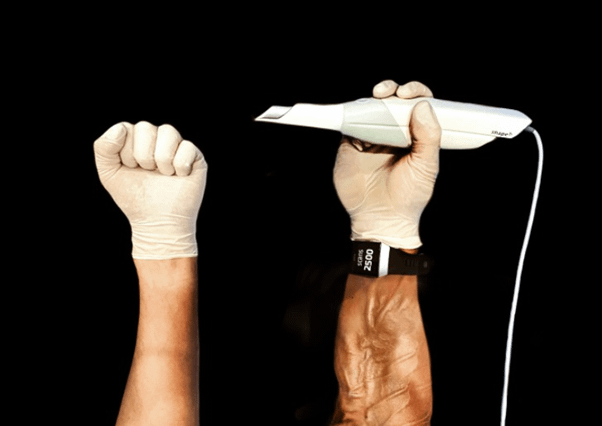What does Raphael Nadal's left bicep have in common with my right scanning arm?
Well today ladies and gentlemen, marks my 2,500th intraoral scan case! The picture is of my right forearm today and the left side is how I used to look. When I started this digital journey, I jokingly asked FITBIT to include a new plugin for ’number of intraoral scans taken’. Wouldn’t that be great!

The journey towards becoming a digital practitioner
2,500 scanning cases for me is a great milestone with lots of clinical highlights. In the midst of the 2.500, I was able to build a specialised training program for the largest TRIOS scanner roll out in Asia Pacific spanning some 100 locations with over 500 practitioners. I’ve had the opportunity to work with many hundreds of highly skilled practitioners along the journey and have learnt so much - especially in the world of digital implant planning and scanning.
Here are my top 10 learnings after scanning 2.500 dental cases:
- Good hardware – Do your research and get the best scanner you can afford!
- Be fearless - You will be nervous in your first 10 to 20 scans. That’s normal. After 100 you will be unstoppable. Get to 100 as soon as possible directly after your first training session. Be fearless!
- In surgery setup - Set your scanner up on the most versatile rolling stand you can find (unless you’re lucky enough to get a TRIOS MOVE+). I have found several good scanner accessories from Anatomic4d but there are many great ones out there.
- Adopt good scanning posture - This is CRITICAL. Decide if you are a stand up (front approaching) or sit down scanner (rear approach). Then master positioning your body according to the arch and indication you are working on. I even think about posture as it relates to the quadrant I’m working on. Get your body into position so that you can always have the scanner head parallel to the area you are capturing. It’s good to learn and memorize these positions in your surgery.
- Support the scanner tip - ALWAYS. At all times, try to achieve a Bipodized support position for your scanner tip with another finger or part of hand. Your support finger should thus be supported by a patient landmark (tooth, sulcus and/or other). Note you may need to swap this support finger as you scan around the patient’s mouth. Use the support finger to steer the scanner. It’s a handy pivot and scanner head rotation point especially as you cross the patient midline. I also use scanner Bipodization positions to retract soft tissue whilst still capturing and supporting scan head. This is a great asset. Optragate is good for when you are only capturing tooth surfaces. When capturing soft tissue however, this form of retraction can get in the way. Finger retraction is the best. The retraction finger becomes the support bridge between your hand and the scanner head support and just rolls along clearing a path for your capture.
- Be critical of your scans - Don’t be afraid to ditch and go again.
- Trim - Trim your scans according to your appliance indication. Look for foreign detached and attached anomalies in your scans (especially if you do some non-AI scanning. Your finger will feature prominently in that movie!).
- Find a good lab - A lab that communicates really well with you. Some labs out there have direct tech links these days. Awesome support is key especially when starting out.
- Be patient with edentulous scans - Edentulous areas are the hardest to scan of all whether full or partial. Build up to it. Start small and increase as your confidence increases.
- Be inventive - You don’t always have to follow the exact predefined manufacturer scan strategy (especially in cases with large edentulous areas). My general rule when there are missing teeth is to always start where the most amount of hard structures are. In this case: start where the most teeth are; then build your scan path from there.